Let's Talk About This Video Of A Ukrainian NASAMS Firing A 'Mystery' Missile
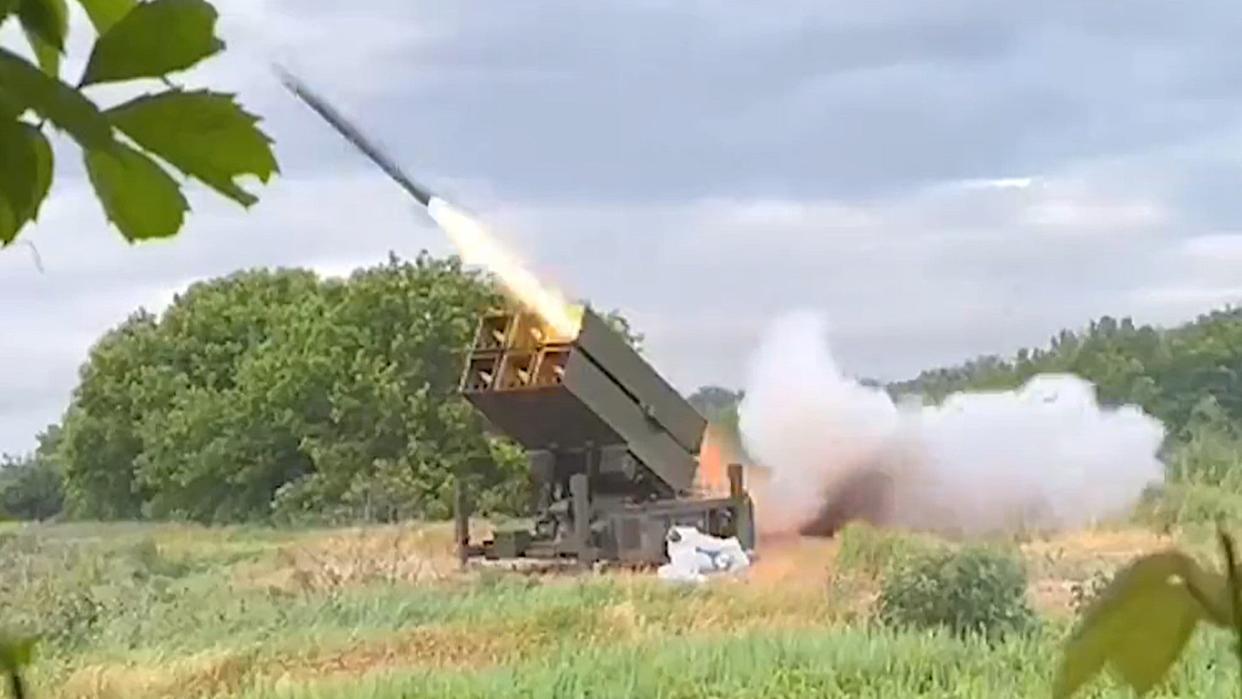
A new video from Ukraine's Air Force has prompted speculation about whether the country is firing an undisclosed type of missile from its Western-supplied National Advanced Surface-to-Air Missile Systems, or NASAMS. By design, NASAMS launchers can fire a number of different interceptors. To date, the U.S.-made AIM-120 Advanced Medium Range Air-to-Air Missile, or AMRAAM, is the primary missile that Ukrainian forces are known to employ in these systems.
The footage of the Ukrainian NASAMS launcher firing the supposed mystery missile was included in a larger video montage released this weekend to mark the country's Air Force Day. Within the Ukrainian armed forces, most major air defense systems are assigned to the country's Air Force.
The brief clip in question of the Ukrainian NASAMS launcher appears in the video below at approximately 0:27 in the runtime.
https://www.youtube.com/watch?v=Z8POxl_ufKg
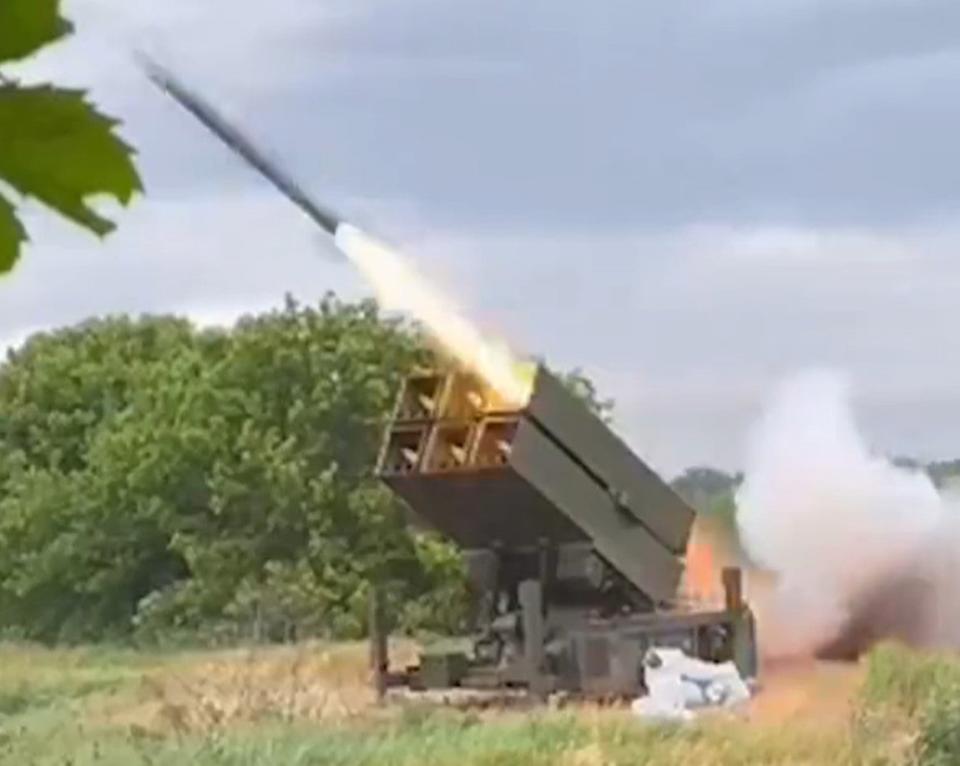
Publicly, the United States and other countries have pledged to send nearly a dozen NASAMSs to Ukraine, including a pair that Lithuanian authorities announced they would be purchasing on Kyiv's behalf just in June. As of October 2022, the U.S. government had delivered at least two of these systems already.
NASAMS has a modular architecture that allows for the use of a number of different radars and other sensors, as well as launchers, in a single battery, depending on the variant, all tied to a central fire control node. The system can be integrated into a larger integrated air defense systems (IADS) consisting of disparate sensors and weapons, also referred to as 'effectors.'
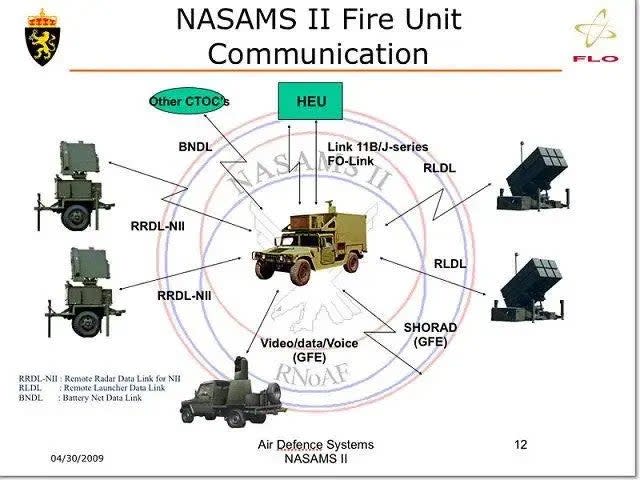
Launchers used in different versions of the NASAMS, including the standard static six-round design seen in the recently released Ukrainian Air Force video, can fire multiple types of interceptors, as well. This includes the system's primary diet of AIM-120 AMRAAMs, as has been clearly seen in previous footage of Ukrainian NASAMSs in action.
https://www.youtube.com/watch?v=YuIk4oqWj1w
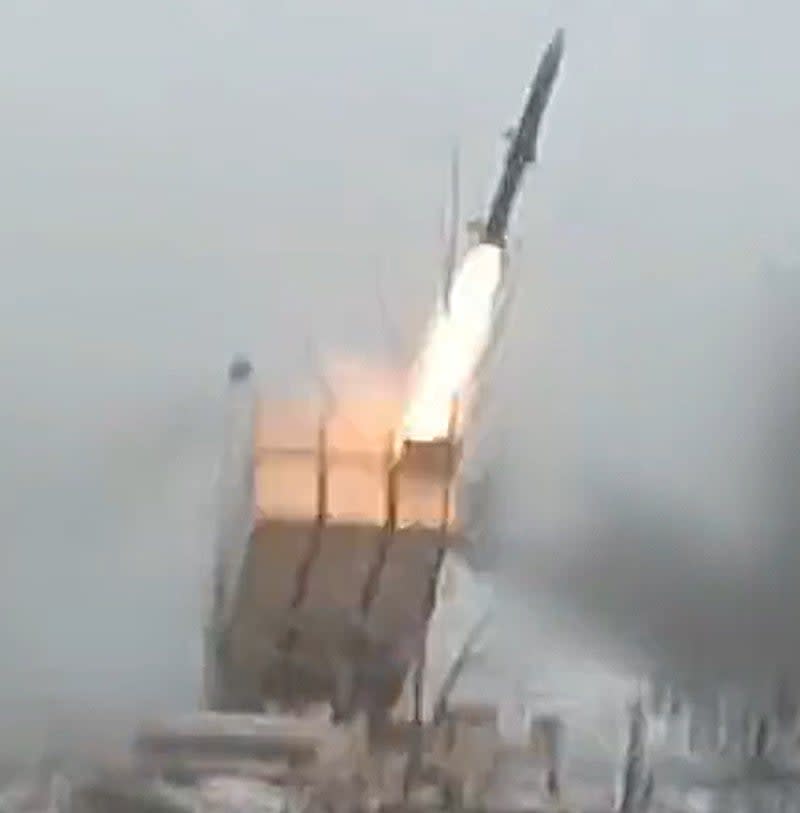
However, the missile in the newly released video does not clearly have fins positioned around the middle of its body or at the tail end, as are found on the AIM-120.
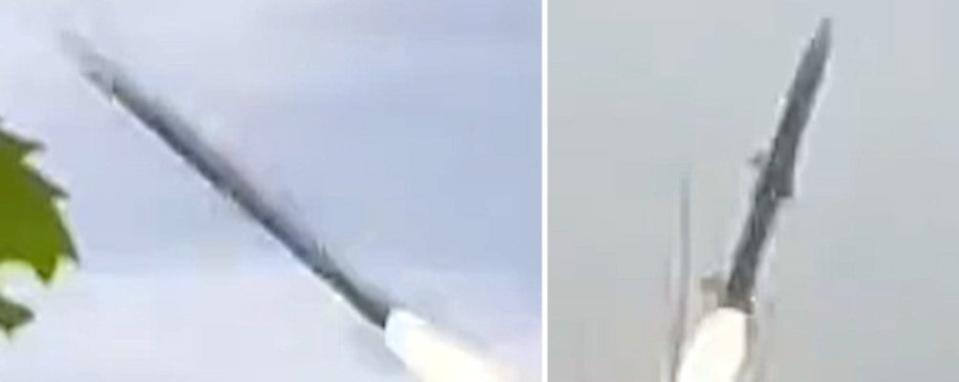
NASAMS is known to be able to fire infrared-homing AIM-9X Sidewinder and IRIS-T missiles, the latter of which the Ukrainians have received already as part of IRIS-T SLM surface-to-air missile systems. However, both of those missiles still have very pronounced fins and/or strakes at various points along their bodies. In addition, both types have rounded noses that contain their seekers. The missiles that can be seen loaded in the NASAMS launcher in the new video have pointed noses more in line with AMRAAM.
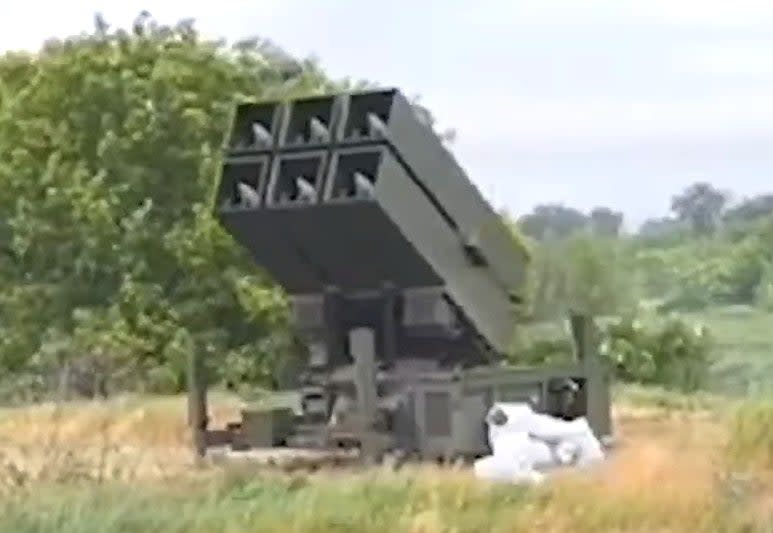
This has all led some to suggest that what might be seen in the recently released video is actually an AMRAAM-ER. This missile, designed specifically for NASAMS, is a hybrid of the AIM-120 and the RIM-162 Evolved Sea Sparrow Missile (ESSM). The combination, which uses the warhead and guidance sections from the AMRAAM and the control and motor sections from the ESSM, offers a significant boost in maximum range and engagement altitude over a standard AIM-120 fired from a NASAMS launcher. You can read more about the AMRAAM-ER and its capabilities here.
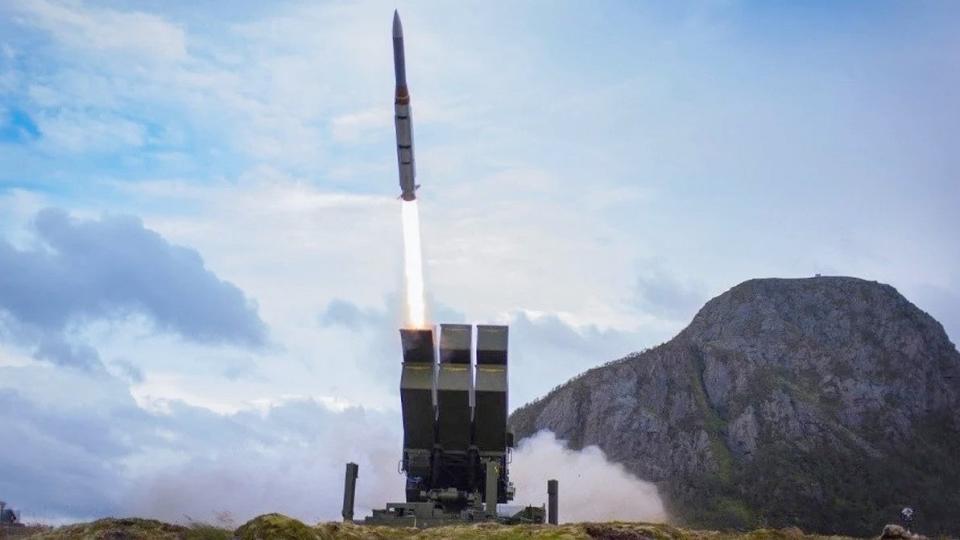
Though a viable option, functionally, it's still not clear if this missile is actually an AMRAAM-ER. There is no distinctive taper readily visible between the front and rear sections of the missile in the clip from the Ukrainian Air Force.
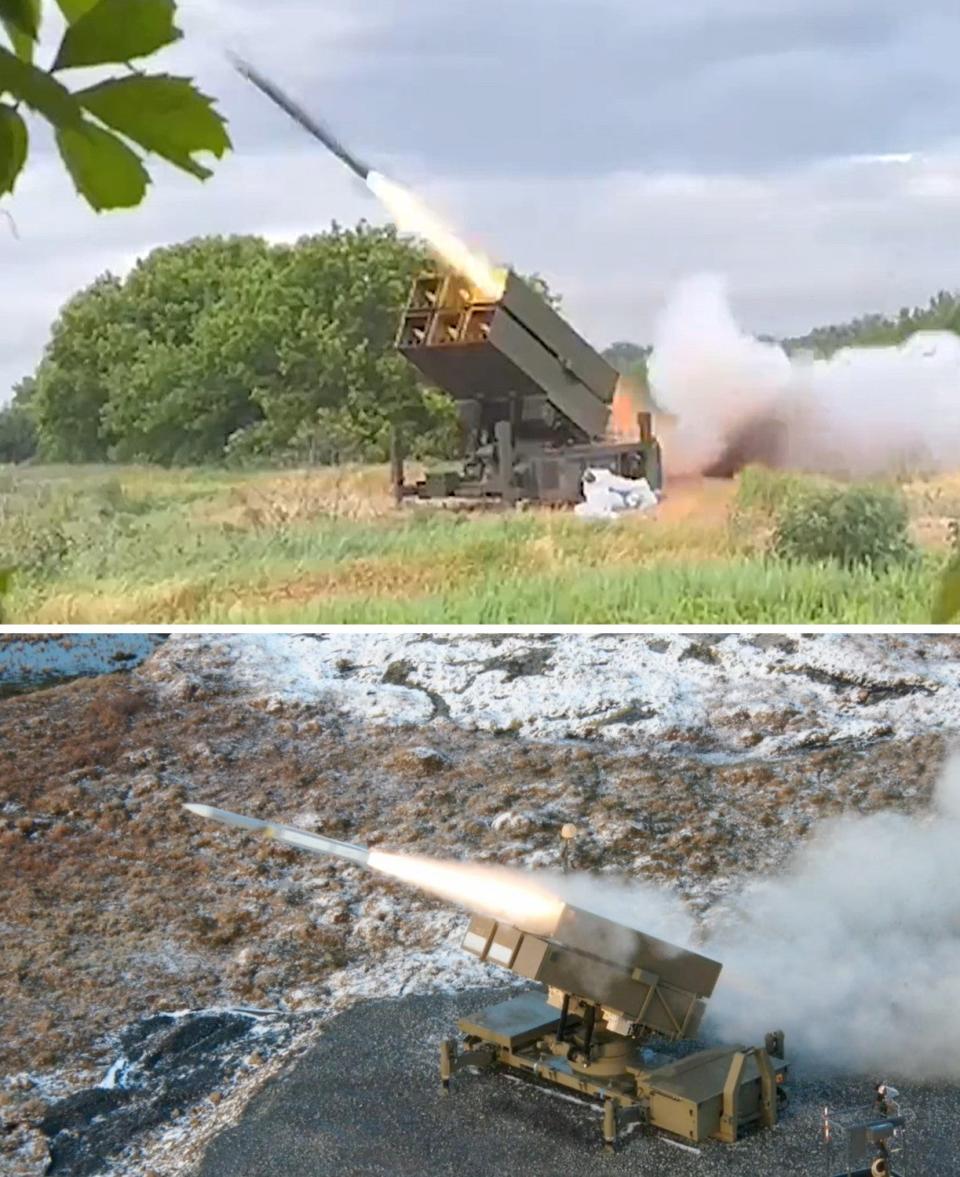
It's also unclear how many AMRAAM-ERs may have been produced to date and then be available for transfer to Ukraine. In 2019, the missile's manufacturer, Raytheon, announced that Qatar had become the first customer to place a formal order. Since then, the U.S. government has at least approved potential sales of these missiles to Hungary and Kuwait.
https://www.youtube.com/watch?v=aj26G5uZ6Do
The missile seen in the 2023 Air Force Day video could of course be something completely separate from what is publicly known to be available for use with NASAMS. Since Russia launched its all-out invasion of the country in February 2022, there have been multiple instances where Ukraine's armed forces have employed improvised or ad hoc solutions to more rapidly field desperately needed capabilities. The Ukrainian military's use of AIM-132 ASRAAM (Advanced Short-Range Air-to-Air Missile) from ground-based launchers, something that only emerged last week, is a particularly relevant and recent example of this trend.
It is also well established at this point that not all military assistance to Ukraine is publicly declared when it is sent.
The most likely answer here is that the newly released Ukrainian Air Force video simply shows a NASAMS launching firing a standard AIM-120, but that the resolution just is so low that it looks unusual. As resolution degrades, small features, and especially small appendages like missile control fins, can become very hard to resolve.
AIM-120C variants and on also have smaller, clipped fins which came out of a need to fit the missiles in the F-22 Raptor's, and later the F-35's, missile bays. As such, seeing these fins in a low resolution video would be all that more challenging.
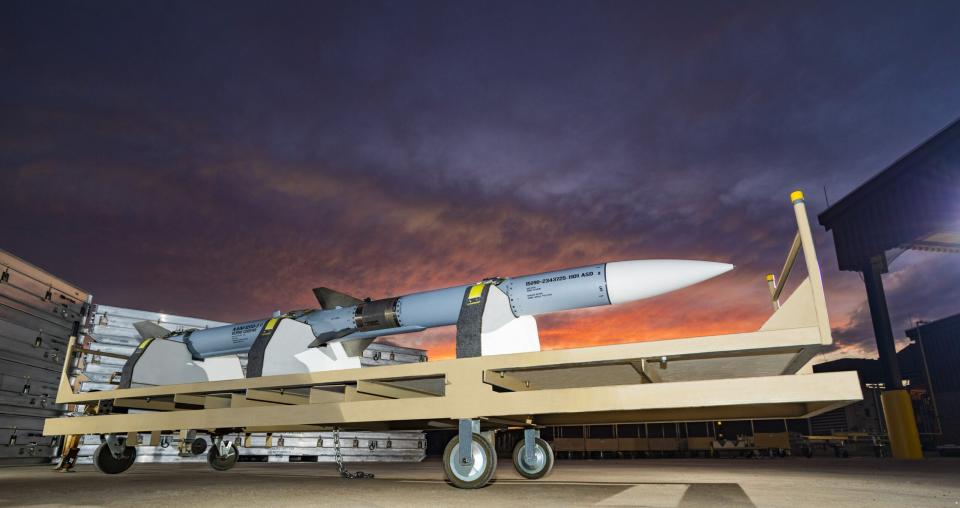
So, given the poor quality of the video clip in question, it is hard to say conclusively one way or another, but an AIM-120 is very likely we are probably seeing here.
What is undeniable is that the demand for air and missile defenses in Ukraine continues to be very high, and in some cases, dire. Systems like NASAMS that can engage a variety of aerial threats are of particular value. Cruise missiles and kamikaze drones, and to a lesser extent ballistic missiles, are Russia's primary means of conducting strikes against targets deep inside Ukrainian-controlled territory.

Finding new interceptors for use with Ukraine's NASAMS could be one way to try to expand the country's available air defense capacity, as well as simply help ensure a steady stream of munitions for those systems. One of the immediate benefits of sending NASAMS to Ukraine, to begin with, was the relatively ready supply of AIM-120s, something The War Zone has highlighted in the past. As it sits now, while Ukraine is in major need of additional air defenses, the AIM-120 inventory should not be limiting NASAMS' effectiveness, the number of launchers and systems overall would. That is if allies are providing a free flow of AIM-120s, of which there are many thousands in NATO stocks.
If nothing else, the new footage of NASAMS in action in Ukraine underscores the importance of these systems within the country's larger air and missile defense architecture and highlights the particular value their modular design offers. While this appears to be an AIM-120, the system is built to be adapted to new munitions. That could prove very important for Ukraine down the line.
Contact the author: joe@thedrive.com

